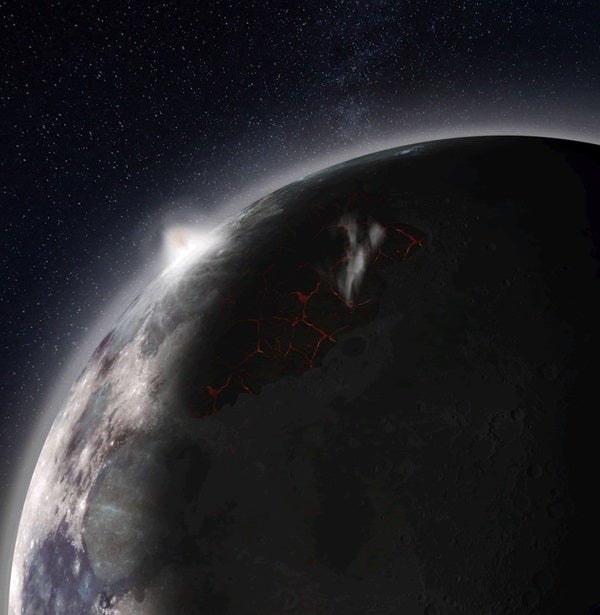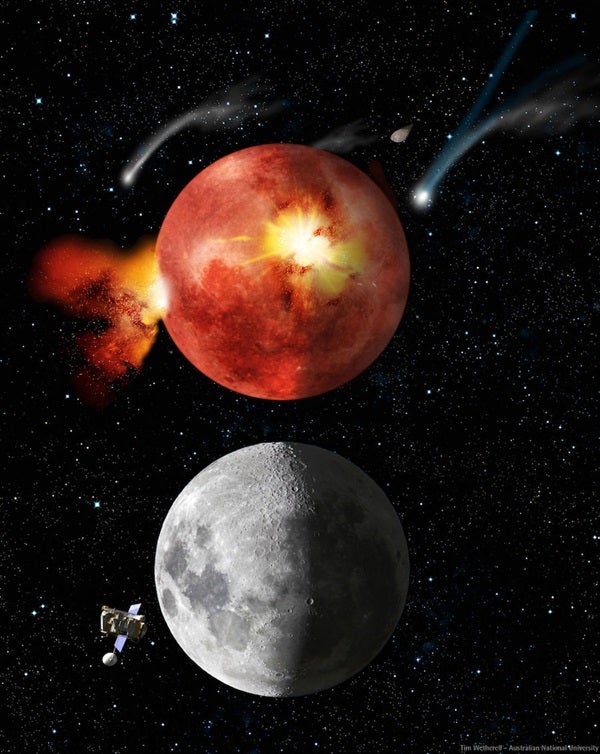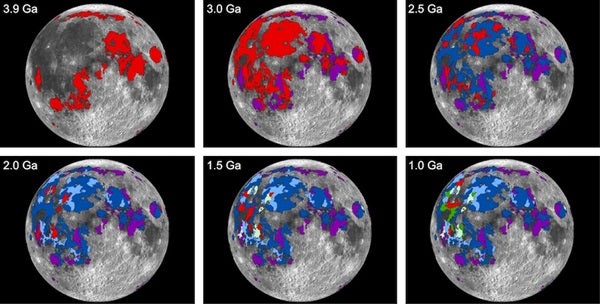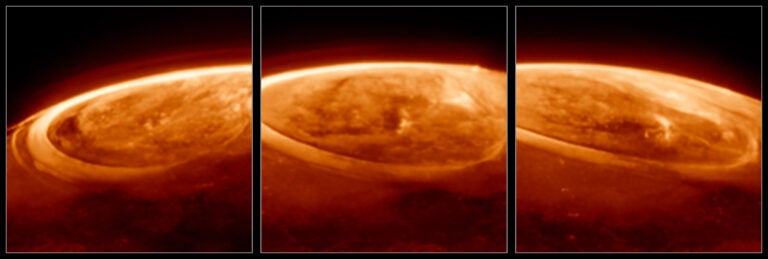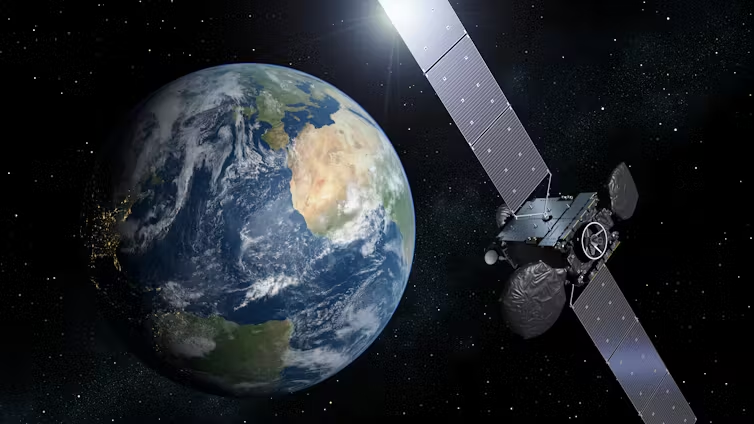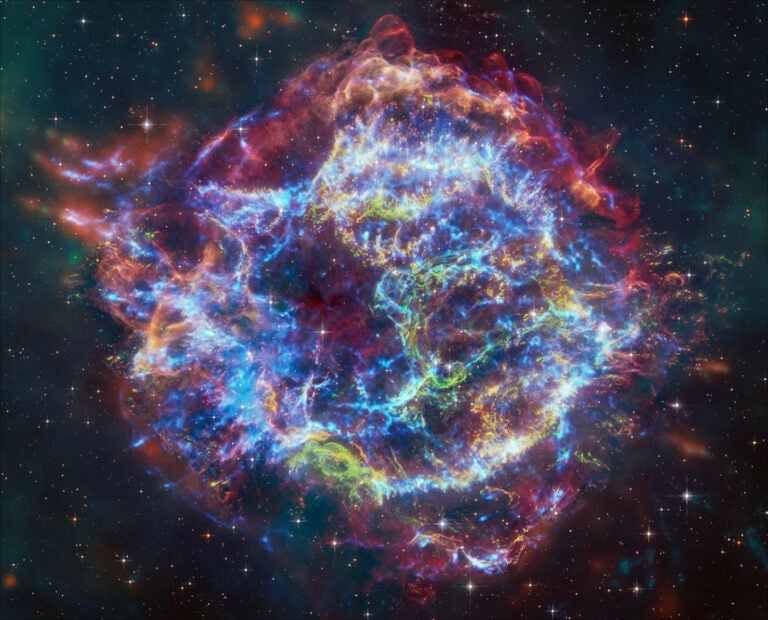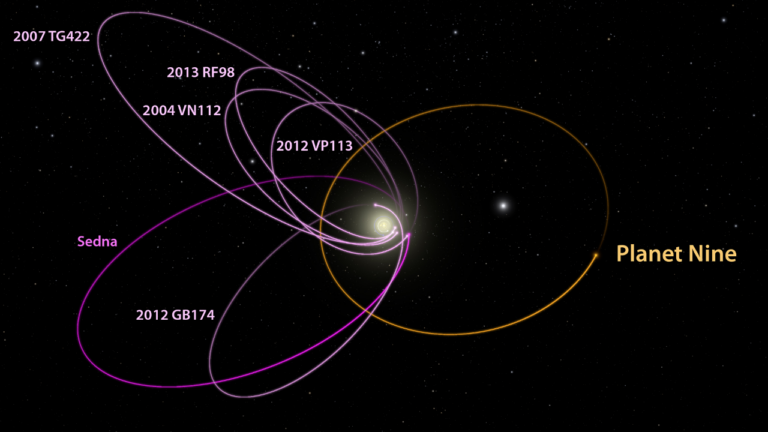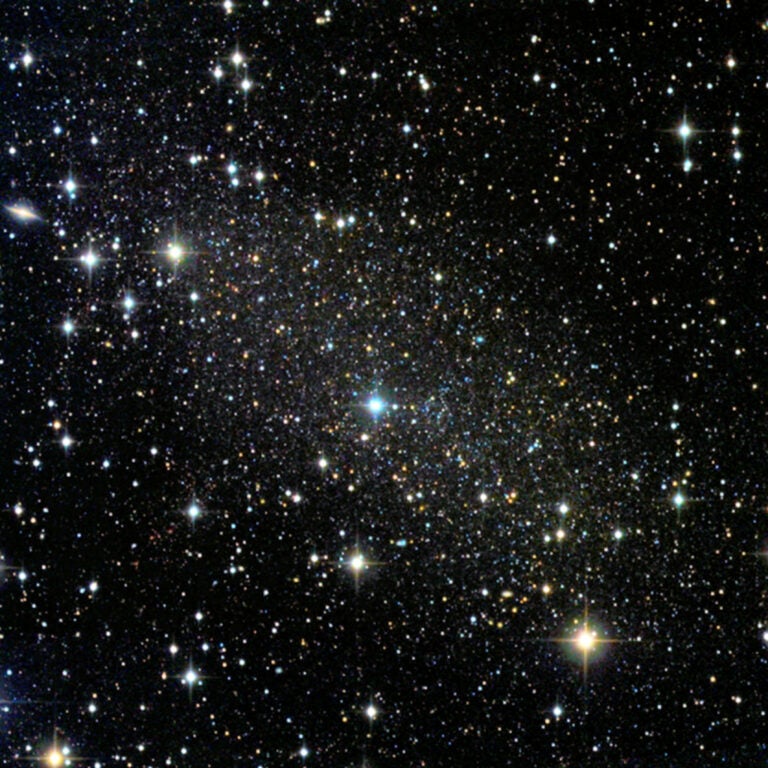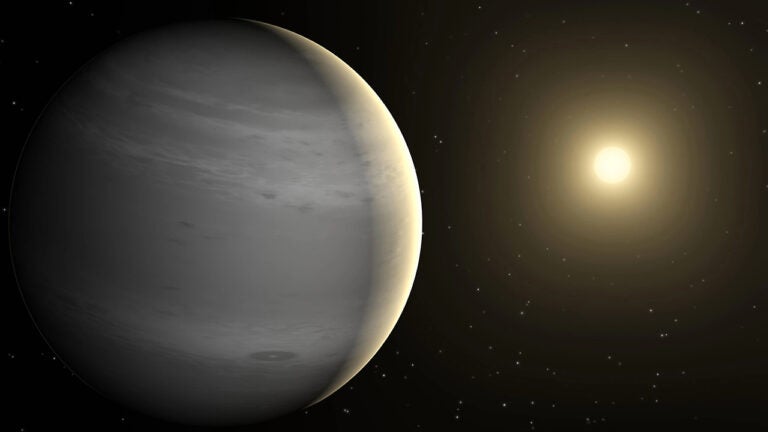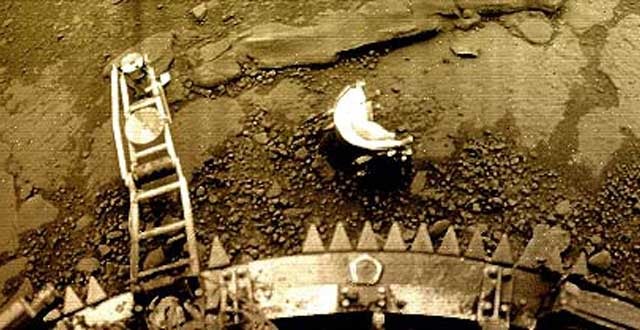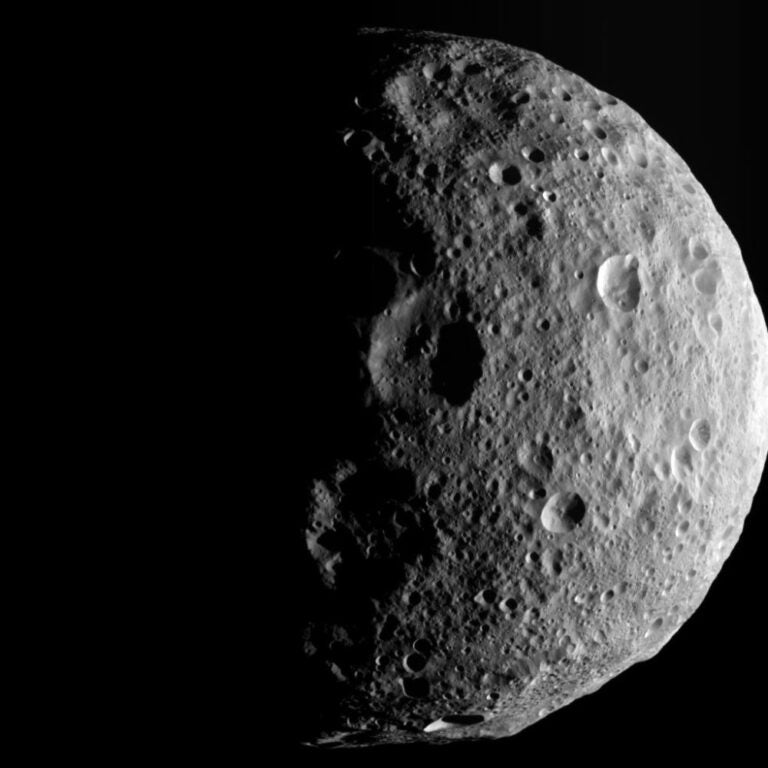The Moon has been through some rough times. Just a few hundred million years after its formation, it experienced what astronomers like to call the period of Late Heavy Bombardment. During this time — lasting from about 4.1 to 3.8 billion years ago — the Moon (and indeed, the entire inner solar system) endured endless artillery strikes from interplanetary debris. On the Moon, this triggered a series of volcanic eruptions that left its surface a hellish landscape filled with lava flows that stretched on for hundreds of miles.
In a recent study published in Earth and Planetary Science Letters, a pair of researchers showed that between 3 and 4 billion years ago, when the primordial Moon underwent this extremely violent period of volcanic activity, it spewed out enough gas to produce a relatively thick atmosphere that persisted for about 70 million years.
Although this atmosphere was extremely thick by lunar standards, it pales in comparison to that of Earth. At its densest (around 3.5 billion years ago), the Moon’s atmosphere would exert a pressure of about 1 kilopascal, whereas at sea level on Earth, we experience around 100 kilopascals of pressure.
In order to calculate how much gas was present in the ancient lunar atmosphere, research scientist Debra H. Needham of NASA Marshall Space Flight Center and senior staff scientist David A. Kring of the Lunar and Planetary Institute (LPI) analyzed ancient lava flows on the Moon’s surface called maria, as well as Moon rocks collected during the Apollo 15 and 17 missions. By examining the rocks, the researchers determined what types of gases were present, while mapping the solidified lava flows allowed them to estimate the total volume of gas that was produced.
In the Apollo rock samples, the researchers found evidence of carbon monoxide, hydrogen and oxygen (the ingredients for water), sulfur, and a number of other volatile gases. Furthermore, the researchers used the rocks to calculate when the most intense periods of lunar volcanism occurred — about 3.8 and 3.5 billion years ago.
“This work dramatically changes our view of the moon from an airless rocky body to one that used to be surrounded by an atmosphere more prevalent than that surrounding Mars today,” said Kring in a press release.
Though the vast majority of the lunar atmosphere escaped the Moon’s gravity and drifted off into space, there are some gases that could have settled into freezing, shaded craters near the lunar poles. If so, these volatile gases may be trapped in icy deposits, forming reservoirs of air and fuel that astronauts can tap into for future missions to the Moon and beyond. And in that case, maybe the Moon’s rough time was worth it.

